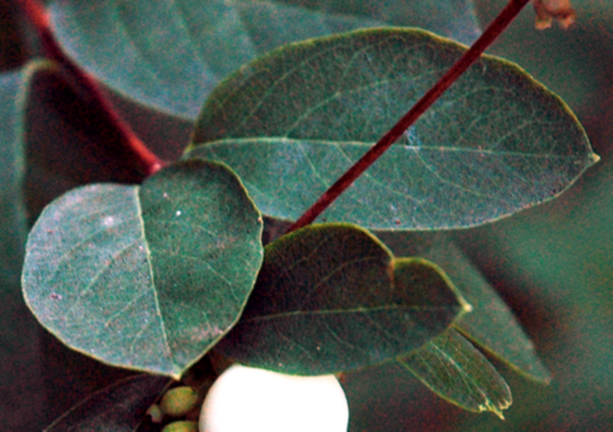
Woody > Symphoricarpos > Symphoricarpos albus > Symphoricarpos albus
Symphoricarpos albus
Common Snowberry, Waxberry
Origin: Eastern North America.
| Family |
| Caprifoliaceae |
| Genus |
| Symphoricarpos |
| Species |
| albus |
| Category |
| Woody |
| Type |
| Shrub (deciduous) |
| Pronunciation |
| USDA Hardiness Zone |
| 3 |
| Canadian Hardiness Zone |
| 1 |
| RHS Hardiness Zone |
| H7 |
| Temperature (°C) |
| -40 - (-35) |
| Temperature (°F) |
| -40 - (-30) |
| Height |
| 1 - 2 m |
| Spread |
| 2 - 3 m |
Photographs
Description and Growing Information
Flowering Period
| Landscape |
| Excellent addition to a shrub border, screen or hedge. The white fruit remain attractive on the bare winter stems as they do not appeal to birds and other wildlife. May also be useful for erosion control due to tendency to sucker. |
| Cultivation |
| Grow in full sun to partial shade in average, medium moisture, well-drained soil (fruit production will be better in full sun). Prune out weak, dead or overcrowded shoots as necessary in late winter or early spring. |
| Shape |
| Oval horizontal. |
| Growth |
| Medium |
| ID Characteristic |
| Twiggy shrub; leaves opposite, entire, irregularly shaped, new growth tends to be oval. Winter identification: branches fine, twiggy; fruit persistent, 1 cm round, white; buds opposite. |
| Pests |
| Anthracnose fungus may discolour the berries. |
| Habitat |
| Native to dry, rocky, wooded slopes, banks, and forests. |
| Bark/Stem Description |
| Stems seldom grow longer than 2 m, branching and suckering freely. Young shoots are slender and erect. |
| Leaf Description |
| Leaves are oppositely arranged on the spreading branches. They are generally oval, differing in size and shape, and up to 5 cm long, or slightly larger on the shoots. |
| Flower Description |
| The inflorescence is a raceme of up to 16 flowers. Each flower has a small, five-toothed calyx of sepals. The bell-shaped, rounded corolla is about 5 mm long and bright pink in colour. It has pointed lobes at the mouth and the inside is filled with with pubescence. |
| Fruit Description |
| The fruit is a fleshy white berry-like drupe about 1 cm wide which contains two seeds. |
| Notable Specimens |
| Royal Botanical Gardens, Burlington, Ontario, Canada. |
| Propagation |
| Propagate by division in autumn, or from softwood cuttings in summer. The plant sometimes reproduces via seed but it is primarily vegetative, reproducing by sprouting from its spreading rhizomes. |
